The Barish Sailwing was under development at the same time as the NASA Parawings. Barish's work is documented in several patents and NASA reports. The Sailwing was considered for use in the recovery of the Apollo command module.
Below are listed the electronically available patents and reports describing the Barish Sailwing. Patents can be looked up using Google patent search. Technical reports can be found at the NASA Technical Reports Server.
David Theodore Barish Sailwing Documents
Patents
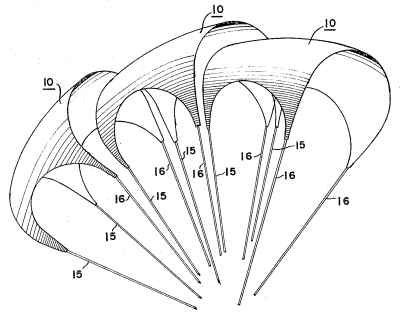 Title: SELF-INFLATING WINGS
Title: SELF-INFLATING WINGSPatent number: 3298635
Filing date: March 3, 1964
Issue date: January 17, 1967
Summary: Self inflating wing modules utilizing cantenaries to transmit lift loads. This patent is the precursor to the Sailwing patent.
Referenced in: 7014149 Peter Lynn (Arc with concave leading edge), 7093803 Dave Culp (Outleader)
 Title: BARISH GLIDE WING
Title: BARISH GLIDE WINGPatent number: 3480238
Filing date: February 27, 1967
Issue date: November 25, 1969
Summary: The Sailwing patent.
Referenced in: 7014149 Peter Lynn (Arc with concave leading edge)
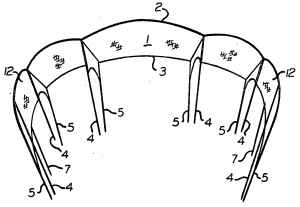 Title: Parachute
Title: ParachutePatent number: 3525491
Filing date: May 10, 1968
Issue date: August 25, 1970
Summary: Progressive Sailwing deployment.
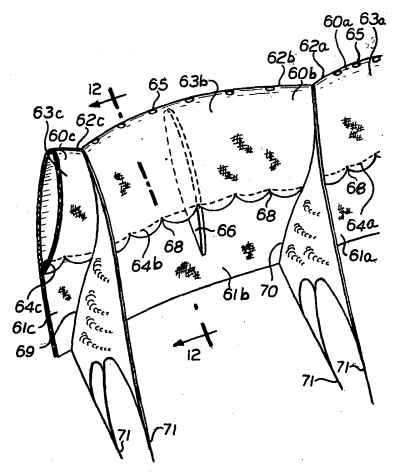 Title: Parachute
Title: ParachutePatent number: 3558087
Filing date: May 22, 1969
Issue date: January 26, 1971
Summary: A Continuation of 3480238 where leading edge details are described.
Referenced in: 7093803 Dave Culp (Outleader)
NASA reports
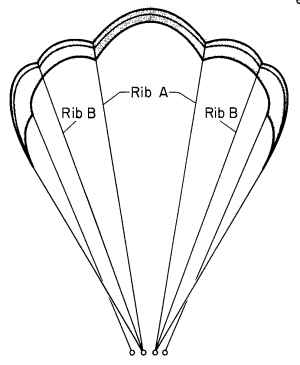 Title: Wind-tunnel tests of a series of parachutes designed for controllable gliding flight
Title: Wind-tunnel tests of a series of parachutes designed for controllable gliding flightAuthors: James A. Weiberg, Kenneth W. Mort
NASA Center: Ames Research Center
Publication Date: May, 1967
File name: 19670015726_1967015726.pdf
Report Number: NASA TN D-3960
Summary: The Barish Sailwing is tested against other gliding parachutes. "of the single canopy configurations investigated, the rectangular canopies [Barish Sailwings] achieved the highest values of L/D. The maximum value was about 2.1 The maximum L/D achieved by all of the configurations investigated was limited by the collapse of the canopy leading edge."
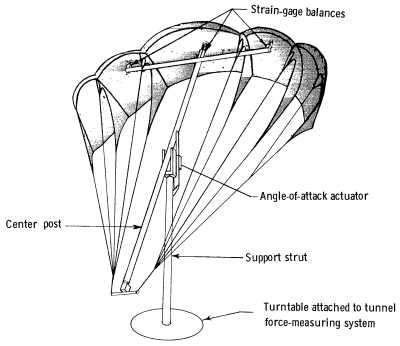 Title: Wind-tunnel investigation of the static aerodynamic characteristics of a multilobe gliding parachute
Title: Wind-tunnel investigation of the static aerodynamic characteristics of a multilobe gliding parachuteAuthors: George M. Ware and Charles E. Libbey
NASA Center: Langley Research Center
Publication Date: July, 1968
File name: 19680018975_1968018975.pdf
Report Number: NASA TN D-4672
Summary: Tests show a maximum lift drag ratio of 2.2 for the 5 lobe Sailwing.
"The model was longitudinally stable and could be trimmed at angles of attack from about 22.5° to 30°. The minimum angle of attack reached during the investigation was 22.5°; below this angle, the wing would not remain inflated. Maximum lift occurred at an angle of attack of 25°."
"The stable trim angle-of-attack ranges gave values of lift-drag ratio of 2.2 to about 1.5 in the lower angle range and values near 0 in the higher angle range."
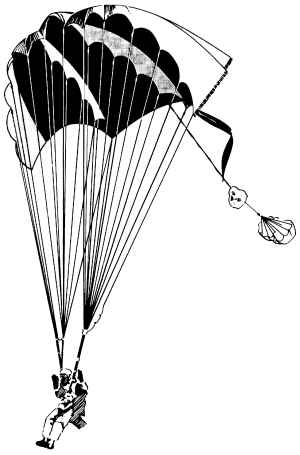 Title: Gliding parachutes for land recovery of space vehicles
Title: Gliding parachutes for land recovery of space vehiclesAuthor: Eilertson, W. H.
NASA Center: Bellcomm
Publication Date:September 8, 1969
File name: 19790072024_1979072024.pdf
Report Number: NASA-CR-108990
Summary: "review the recovery requirements of both the Apollo system and an earth landing logistics system. The later half contains a survey of current parachute systems under development as to their state of development, performance, reliability, and weight."
A table lists the configurations and gives the following maximum L/D ratios:
- Parawing: 2.1 (single keel)
- Sailwing: 2.2
- Parafoil: 3.3
- Parawing: 3.3 (twin keel)
- Parafoil: 4.0 (modified leading edge)
- Volplane: 4.3
This list does not include Barish's work on rotating parachutes (patents 2797885, 3073555, 3118641, 4844384, etc.)
From the above reports, it appears that Barish's Sailwing did not have a more prominent place in NASA research because the twin keel Parawing out-performed it.
Related pages:
NASA Parawing Research
NASA Parawing Reports